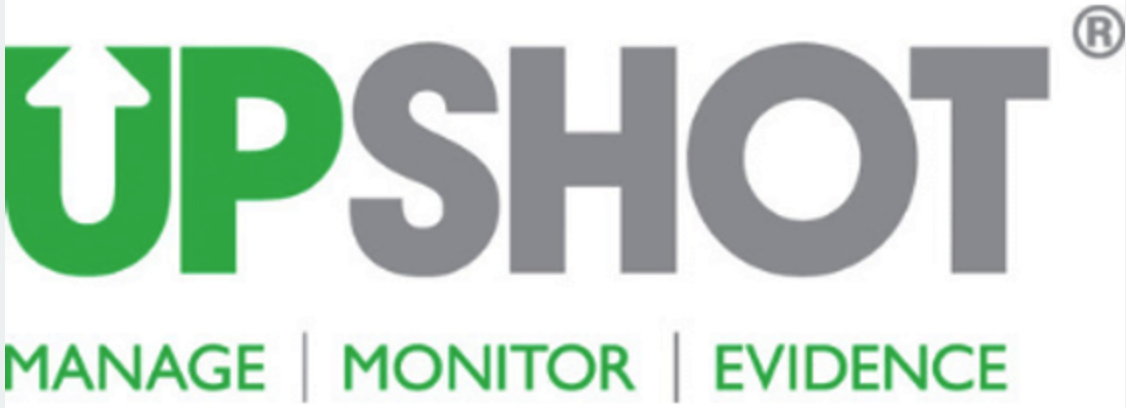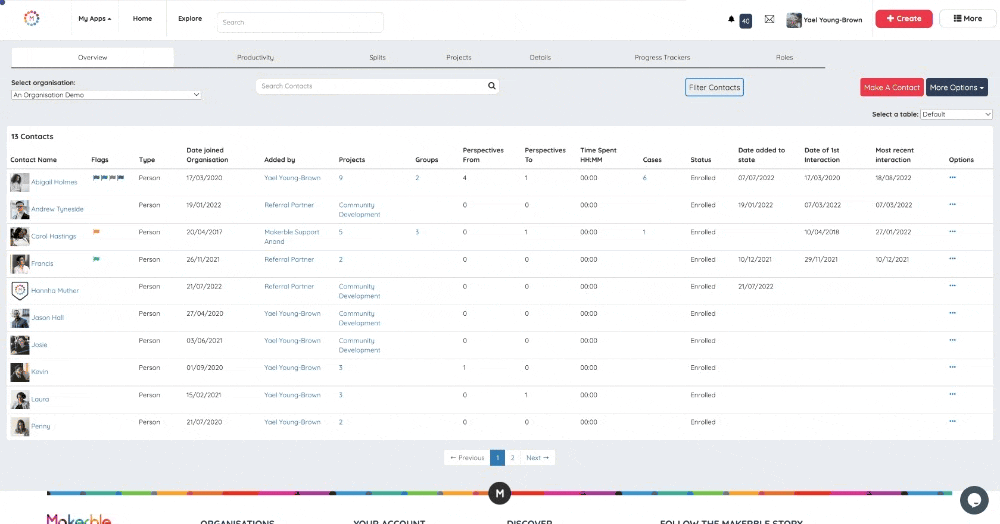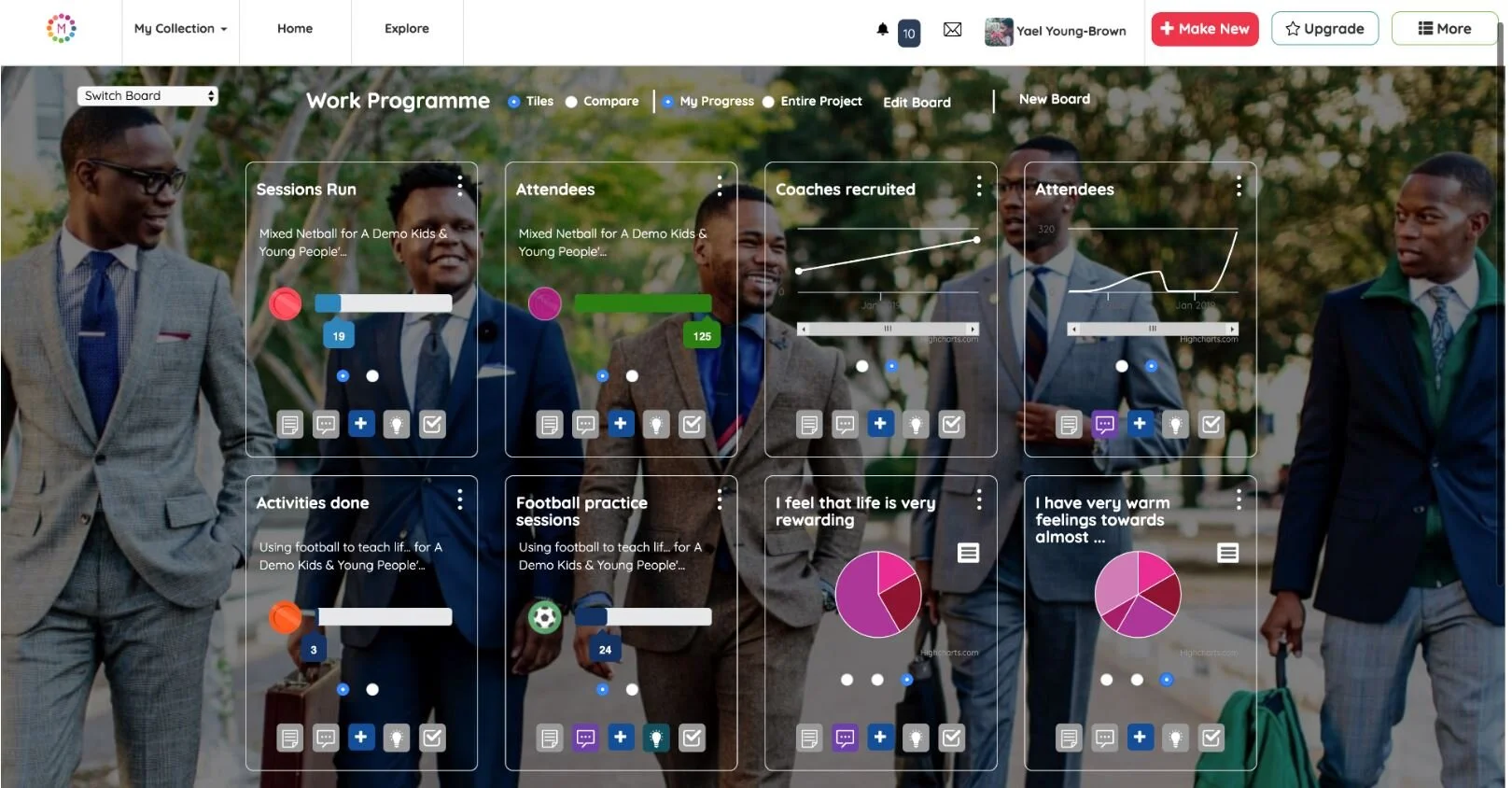This guide walks you through how to measure the impact of your programmes. Filled with useful prompts and helpful suggestions, it will give you what you need to make progress on your journey towards better monitoring and evaluation.
How to describe your outcome measurement approach in a funding application
When you’re writing a funding application and you reach that dreaded part that asks about your impact measurement approach or outcome framework, don’t worry - help is at hand!
The funding application question
How will you measure your impact:
How personal outcomes will be measured and evidenced, including the measurement tool(s) that you plan to use
How you plan to measure progress against outcomes over a period of time; and
Systems and business processes you will put into place to manage and demonstrate performance and underperformance.
How you could answer it
Outcomes will be measured by doing a pre-programme baseline assessment followed by a mid-programme midline assessment and then finally a post-programme endline assessment. The assessment will be a survey composed of questions that ask the client to rate themselves using various scales such as a Likert scale, for example "To what extent do you agree with the statement: I feel like I am able to use my time productively" from Strongly Disagree through to Strongly Agree.
As well as using the questions with a scale, we will ask each client to explain why they rated themselves that way. This response will be captured as text and will provide further evidence of why the rating is at it is.
Our case management system, www.makerble.com, allows us to track the Distance Travelled for each client's responses to each question over time. This will allow us to see for example the number of clients who have gone from (at the start of the programme) saying that they strongly disagreed that they were able to use their time productively to Agreeing or Strongly Agreeing that they could use their time productively.
Our case management will show us every distance travelled journey; which means that we will also notice the clients for whom there has been little to no improvement.
This means that we can identify the clients who are underperforming from an outcomes perspective. We can then work as a delivery team to adjust our approach to ensure that we tailor our support appropriately to help those clients onto a journey of improvement.
Considerations
When a funder asks you which Measurement Tools you will use specifically, they might be asking you to specify the survey you intend to use. There are various surveys available on www.Makerble.com/explore/surveys that you could pick from, e.g. the CORE10 (More info: https://www.corc.uk.net/outcome-experience-measures/core-measurement-tools-core-10/) which is available on Makerble: https://www.makerble.com/story_categories/2596.
Disclaimer: We wish you all the best with your funding application however Makerble accepts no responsibility if your funding application is unsuccessful.
Upshot alternatives: Makerble versus Upshot
Upshot is a case management system used by charities. It was originally developed for use in the sport sector. Some of Makerble’s clients used to use Upshot. This is a summary of why they left Upshot to use Makerble.
Incoming Referrals
Upshot only has a single referral form
This means that if you run multiple programmes or services and want to be able to ask different stakeholders different questions, you need to add skip logic to the one Referral Form you have.
This puts a lot of strain on a single form and means that in practice, you have to compromise between having something that works across all your programmes but doesn’t provide the full breadth of information you would like to have.
By contrast, Makerble gives you unlimited referral forms for each project.
You can embed Makerble referral forms in your own website and add your own branding
If you want to future-proof the system that you use, it’s important to consider whether your system gives you the flexibility to add additional forms as you go along.
Safeguarding and Communication
Upshot does not allow you to communicate directly with clients, participants or stakeholders
If you want to message beneficiaries before an event to remind them to attend, you need to do that from your work phone or email account. That information is not brought into Upshot.
This means that your communications records are spread across multiple members of staff and potentially volunteers.
This is a risk from a safeguarding perspective as it means you no longer have a clear paper trail of the interactions your organisation has had with the vulnerable people you work with
Makerble has an SMS messaging centre and an Email messaging centre.
This allows you to
Send bulk messages to contacts via SMS or Email
Receive messages from contacts via SMS or Email
See your organisation’s entire SMS and Email history with each contact
Usability
Upshot can be difficult to use, especially for people who are not familiar with corporate reporting systems
Makerble is designed to look like Facebook but built to perform like Google Analytics.
This means that your staff and volunteers find it easy to navigate and actually enjoy using it.
This reduces the likelihood of people being too busy to input data. When systems are not intuitive, staff typically input the bare minimum that they can get away with.
Makerble works on laptops, tablets and mobile phones.
Conclusion
Upshot works for organisations that only need a single referral form and whose staff have the time to invest in learning how to use a complex system.
Makerble provides extensive customisability that means that your system is future-proofed and able to adapt as you grow.
Bristol Capital Green Partnership use Makerble to measure the Collective Impact of their Community Climate Action projects
Bristol Green Capital Partnership secured £2.5million in funding after using Makerble to demonstrate the impact of their pilot programme to The National Lottery Community Fund’s Climate Action Fund. Find out how the partnership uses Makerble to remove paperwork and avoid getting tied up in spreadsheets.
The Trussell Trust use Makerble to understand the effectiveness of their foodbanks
Spadework use Makerble to record their day to day impact
Somerset West and Taunton Council choose Makerble to manage their employment hubs programme
Case Study: Engineers Without Borders
SurveyMonkey alternatives: Makerble versus SurveyMonkey
SurveyMonkey is a way to collect survey responses
Case Management
SurveyMonkey is not a case management tool.
This means that in order to use SurveyMonkey, you have to maintain a separate system to manage your day to day work with clients, beneficiaries and stakeholders
If you want to use surveys to understand your impact, you will have to copy & paste some data between your spreadsheet and SurveyMonkey.
This is inefficient, takes up precious time and is susceptible to human error.
Distance Travelled
SurveyMonkey is designed to give you a show you the results from a single survey campaign. It is not designed to compare individual people’s survey results over time.
On Makerble, every respondent has a profile
This means that Makerble can automatically detect their pre-programme, mid-programme and post-programme responses to each question and instantly report the improvement over time for each individual beneficiary but also for the cohort as a whole
There are no insights beyond the questions in your survey
SurveyMonkey only looks at the answers to survey questions
It does not take into account the operational information you have about your beneficiaries
Because you cannot cross-reference your survey data with your operational data, it means that you miss out on valuable insights.
Example
If you are a therapy nonprofit, your case management system shows the demographic makeup of your clients and the number of sessions they attend. By cross-referencing this with your client’s survey results (which you can do in Makerble), you could see that:
people who attend between 5 & 10 sessions tend to be those that see the biggest improvement
Black girls aged from 14 to 17 tend to underperform versus the average
Everyone who is counselled by Therapist X tends to see a bigger change over time
Those kinds of insights that tell you about the audiences you're under-serving are only possible when you're able to cross-reference survey responses with operational data about how often you see people, who sees them, demographic details about those people, who referred them, etc.
Conclusion
Whilst SurveyMonkey is a powerful surveys tool, it stops at surveys.
Whereas on Makerble you will get the context that helps you understand your survey results
5 things that happened in the Charity sector this week - 23rd April
5 things that happened in the Charity sector this week - 16th April
The difference between Outputs, Outcomes and Impact
5 things that happened in the Charity sector this week - 8th April 2021
How to persuade your team to move away from spreadsheets for evaluation
5 things that happened in the Charity sector this week - 26th March 2021
5 things that happened in the Charity sector this week - 19th March 2021
Case Study: Moving On Up
How to actually make more impact as a charity
Plan, do, review.
This is the dream of any good monitoring and evaluation process and the thing we all know, in theory, should happy regularly when delivering charity services. Especially when funds are tight, making services more streamlined and effective is good for everyone.
We all have good intentions around this but there are two key things that are quite often missing:
Good quality, reliable data
Easy to use reporting tools
Without these things, the review process becomes difficult and, in some cases, impossible.
So how can we actually close the loop and use what we know to improve charity services?
One way is to pay for a large scale evaluation project to take place, but what if that process could be simpler? What if decisions could be made more quickly, based on real time data that your team are motivated to collect.
Firstly, let’s talk about data.
There are two key things that make for excellent, quality data collection:
Easy to use data systems that make data capture a dream rather than a chore.
People who are motivated to collect data.
Without one of these two things, you will never have good data to work with. You can invest all the money in the world in a new system, but if your team aren’t motivated that system will quickly become defunct and full of unusable data or empty. You can also have the most willing team in the world, but without a good system in place, data collection can quickly become a chore. Let’s be honest, most people don’t work in the charity sector because they’re motivated by data collection, but it is a key part of the job, so making sure your systems are easy to use will help a lot. But a good system alone will never be enough to motivate everyone, but there is a secret tool that can help.
Easy to use reporting.
This is the key to not only reporting on your impact, but also encouraging people in their data collection too. Because when an individual can SEE the difference they are making, at a glance, data input becomes a lot more motivating. What if they could set their beneficaries, or clients, goals and then see how close they were to achieving them, in real time? They’re more likely to input that data in the first place.
Tracking goals and capturing data is made easy with Makerble
Pretty charts and dashboards
Now the team are motivated to collect that data- how do you report on it? With traditional systems you may be used to downloading it all and analysing it in Excel. What if you could have dashboards that tracked all of your progress? You can look at data in real time and realise wow, “I didn’t realise we were helping that many people.” “It’s interesting that we’ve seen a drop off in attendance recently, I wonder why that may be” and so much more.
That’s why we’re here.
Our ethos is to help you Learn, Adpat and Repeat. We want data collection to feel easy, reporting like a breeze. Not just so you can report to your funders and stakeholders (although our customisable public dashboards means you can share your stats with them instanly-no, seriously) but so you can use your data to make changes, adapt your services and therefore have a greater impact.
We’d love to chat
We’re so passionate about this and we’d love to hear more about you and the current challenges you face around this. So, if you’re interested in hearing more, you can book in a chat with one of us today.

























